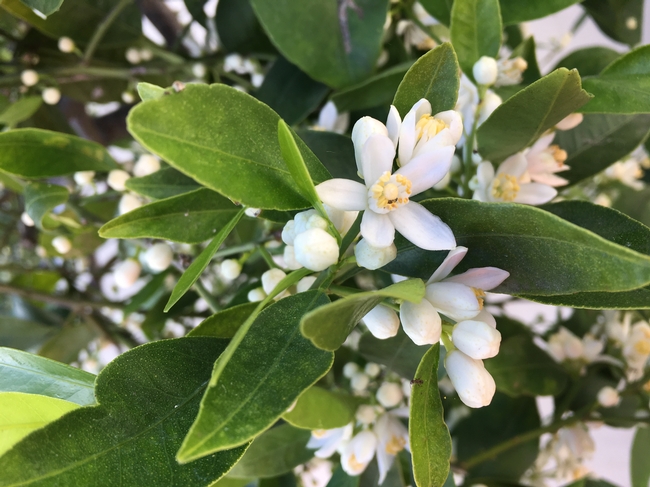
Dancy Mandarin
By Linda Lewis Griffith UCCE Master Gardener
Dancy Mandarin
Citrus tangerina ‘Dancy'
Planting zone:
Best flavor in Zones 12 and 13, but good through zone 24.
Size:
Large, vigorous, upright tree (20-30') with erect branches. Dwarf tree (4-10') suitable in large pots or as espalier.
Bloom season:
Trees produce fragrant flowers in early spring. Fruit ripens December-February. Fruit holds well on tree.
Exposure:
Full sun.
Pruning needs:
Pruning is only necessary to remove dead branches or twiggy growth. May also be done to shape tree as desired.
Water needs:
Keep soil moist but avoid free-standing water. Water newly planted trees frequently. Well established trees may be watered every other week. Container plants may require daily watering in hot weather.
Narrative:
Dancy mandarins are the standard tangerines found in markets before Christmas. Their fruit is smaller than other mandarins and measure 2 ¼ to 2 ½ inches in diameter. Fruits tend to be seedy, with anywhere from six to 20 seeds in each fruit. Fruit is flattened and somewhat pear-shaped due to the neck at the stem end. The flesh is a deep orange color with a rich flavor. Rind is thin, reddish-orange, leathery and tough. Skin is loose and easily removed, but not puffy until well past maturity. Remove fruit by clipping to prevent peel from tearing.
Trees are large and densely-foliated with a tendency to bearing fruit in alternate years. Crop thinning by judicious pruning may encourage trees to produce fruit annually. Branches are nearly thornless.
Trees are moderately cold-hardy and will survive to 20 degrees F. But the thin-skinned fruit are more fragile and can be damaged if temperatures drop.
Dancy mandarins are self-fruitful and do not require a nearby pollenizer to enhance productivity.
Dancy mandarins are thought to have originated in India and were taken to China where they are still extensively grown. They were first planted in Florida in 1867 and quickly became the leading mandarin variety in the country. They have also played a role in the development of other citrus varieties, such as tangelos and tangors.